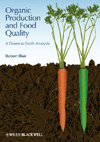Playing A Full House
By Dan Malovany
Franz Family Bakeries plans ahead by folding production into a $42 million bread and bun plant in Springfield, Ore., and by expanding and renovating its historical Portland, Ore., facility.
Franz Family Bakeries wasn’t planning to replace its Williams’ Bakery anytime soon. However, when the University of Oregon indicated that it wanted to build a new basketball arena, Bob Albers, the company’s chairman and CEO, knew there would be no ducking out of the issue.
That’s because the university had 7.5 acres of land that butted up against the bakery’s property. Due diligence by school officials showed that the Williams’ Bakery was the best location for its new Oregon Ducks basketball arena. Although they had the right for eminent domain, university officials had chosen not to exercise it and implied that they would rather not.
Albers knew when to hold them and when to fold them.
“We knew if the card was there, they could play it,” he says. “We made up our minds early we would move and do the best we could. So we negotiated what was a fair price for the Williams Bakery.”
For more than 30 years, Albers has worked at Franz Family Bakeries and has been involved in a dozen acquisitions that transformed the Portland, Ore.-based business into one of the largest, privately held independent bakeries in the nation. Under his tutelage, the company invested in operations and expanded many of them to keep up with market demands over time.
However, the new $42 million facility, located just outside of Eugene, Ore., will be the first bakery that was built from scratch during Albers’ tenure. As a part of its 100th anniversary celebration, Franz Family Bakeries has scheduled a grand opening celebration at its new bakery in late August.
Outside of the new 160,000-sq.-ft. facility, a sign will read “Franz. Home of Williams’ bread.” Inside, the bakery will house two production lines, and its 165 employees are expected to hit the ground running.
“It will be full,” Albers says. “We will run in excess of three shifts. We’ll run in excess of 150 hours a week per line.”
Although the new operation will serve basically the same geographic territory as the current bakery, Franz has dramatically increased its production capacity. Specifically, the company’s engineers doubled the projected throughput for the bun line since the bakery was designed two years ago.
That’s because bun sales in both retail and foodservice channels have rebounded beyond expectations following the decline of the low-carb craze.
“Last year, we saw a huge growth take place in March, and we had anticipated a big number for Memorial Day, and it far exceeded from where we thought it was going to go, and we never got out from behind the eight ball all summer long” Albers explains. “We just decided with the new plant to increase capacity that will take care of us five years out.”
In addition, Interstate Bakeries Corp., the producers of Wonder bread, pulled out of the bread market in Oregon and Washington as a part of a massive restructuring and consolidation of its operations. That move eliminated additional capacity in a market that continues to see steady population growth.
The new bun line, which opens this spring to meet the expected peak demand for summertime barbecue season, will be capable of running 750 pieces a minute, while the bread line, which opens shortly afterward, will bake 9,000 loaves of bread per hour. In comparison, the soon-to-be retired Williams’ Bakery produces 250 buns a minute and 8,000 loaves of bread per hour. Overall, the Springfield plant will be the home of longer-run items, such as white bread, 100% wheat bread and private label products.
“It will be the most efficient bread bakery we have,” Albers notes.
In addition to increased capacity, the new plant streamlines distribution. The old Williams bakery had just one warehouse door for loading trailers of product for the market.
“We now have nine doors,” Albers notes. “We can park three sets of triples [three-trailers pulled by one truck] and load them simultaneously, whereas before we could only load one trailer at a time.”
Franz also added versatility to the production side of the operation. For instance, although the lines are fed by a micro-ingredient system, the new mixers also can be front-loaded manually with ingredients that allow the bakery to produce a plethora of products.
Moreover, the oven is designed to provide flexibility so the bakery can react quickly to changing market trends.
“With the oven we chose down there, it is not the fastest oven in the industry, but it is one that allows us to produce a wide variety of products,” Albers says.
A Shot in the Arm
Previously, the old Williams’ Bakery produced a number of customized products, hearth breads and rolls, and other short-run items. To minimize changeovers at the new plant, much of that production has been moved to the older Portland facility, which was significantly renovated over the last year.
The Portland plant needed a shot in the arm. In 2003, during the height of the low-carb craze, Franz shut down the bread line and moved parts of it to the Williams’ operations. With last year’s rebound in bread sales, coupled with Interstate’s exiting the market, Franz needed a significant bump in bread capacity in a hurry. It totally refurbished the bread line, right down to replacing the wooden floors.
In December, the company celebrated the start-up of the bread line. Moreover, the company spent $3 million in new slicers, baggers and other systems to automate the plant’s packaging department.
In many ways, the Portland plant has sentimental roots for the company and the community. The historical facility is located on the same site where the company’s founder, Engelbert Franz, and his brothers built their first bakery in 1911. Previously, the Franz brothers had to work in bakeries they had purchased, including their uncle’s United States Bakery, which still remains the company’s corporate name.
Additionally, Joe Franz, Engelbert’s son, who later served as chief executive from 1954 to 1988, was born above the production room in a bedroom that eventually became his office. Albers recalls that the younger Franz liked to joke: “I never got very far in life,” but he made a lot of dough.
Today, the Portland complex takes up five square blocks and features new window paintings announcing the company’s centennial and depicting images of the bakery’s proud past. The 230,000-sq.-ft. baking facility houses a panned bread line, a bun line and a string line that produces French bread and a variety of hoagies and rolls.
The bakery has four 200,000-lb. silos for white flour; two 100,000-lb. silos for wheat flour in a split tank; two 32,000-lb. white flour use bins for the string and bread lines; two 100,000-lb. use bins for the bun line; and three 16,000-lb. use bins for the bread whole wheat and mix products.
Cranking Out Quality
Production ranges from 1.5 shifts on the string line to three shifts on the bun line during the busy summertime season. Unlike a straight-line operation, all production flows to the central packaging department, with the bun line located to the south and the string and bread lines to the north.
“You normally bake your products at one end and package them at the other, notes Bill McCarthy, the bakery’s operations manager. “Here, we bake on the edges and package the products in the middle.”
For bun production, the 2,000-lb. sponge mixer and 2,000-lb. dough mixer are located on the mezzanine level and allow gravity to drop the dough into the dividers on the first level. The bakery recently has installed a glycol chilling system to control the dough temperature during the hot summer months and provide stricter front-end controls to the process.
Sponges receive a conventional four-hour ferment in a first-in, first-out trough system. After a 13-minute mix, the dough is dropped down chute to two dividers’ hoppers. There, the six-port extrusion dividers produce up to 760 pieces a minute, depending on the size of the product. After passing through an automatic tray proofbox, the 24-piece pans then travel to a 38-tray single-lap tray oven, through an automatic bun remover and onto a ceiling cooler prior to slicing and packaging. The bun line comes with automatic pan stackers and unstackers.
The string line can produce 285 sub rolls or bread sticks per minute. Sponges are prepared in an 800-lb. mixer, and dough is produced in a 1,300-lb. mixer. Afterward. the dough passes through a six-pocket piston divider and through flour dusting and an enclosed cone rounder before receiving a seven-minute ambient rest. A sheeter and two cross moulders then stretch the dough pieces up to 21 in., after which they are cut into three pieces for breadsticks or rolls and placed on 18-piece pans. The pans are racked and rolled into a walk-in proofbox, which holds 21 racks of string-line product and 24 racks of bread products. Having a walk-in proofbox allows the bakery to produce a variety of short-run products with multiple changeovers during the day, McCarthy says. String-line products are baked in a 38-tray single-lap oven.
The bread line also uses a similar sponge-and-dough process for producing buns. After mixing and fermentation, the six-pocket bread divider cranks out 65 loaves a minute. Following rounding and resting for about 90 seconds, the 32-oz. loaves, baked during SF&WB’s March tour, were deposited in four-strap bread pan, proofed for an hour and baked on a 100-ft. tunnel oven for 28 minutes.
The packaging area features two systems of band slicers, wrappers and baggers for double-wrapping bread at a rate of 45 loaves per minute. Buns are sliced and then packaged in one of two retail baggers or in one of two pillow packers for foodservice accounts. On the bread line, the bakery plans to install another bagging system that will allow the line to put two loaves in one bag for wholesale club accounts.
Fast to the Market
In the warehouse area, products are broken down by route, loaded onto transports and shipped to other bakeries or depots.
“When it gets to the depot, it’s all ready for route shipping to the store,” McCarthy says.
At its six bakeries throughout Oregon and Washington, white and variety panned breads typically are made locally to ensure freshness to the market. For instance, Snyder’s bread, sold in eastern Washington, is baked at the company’s Spokane, Wash., bakery. Likewise, Franz breads are made in Seattle, while Williams’ breads are produced in Springfield, Ore. At Franz, white bread has a 72-hour shelf code date.
While Portland produces “outdoor” or hoagie rolls and other specialty products, the Seattle bakery bakes bagels, doughnuts and English muffins for the whole region. The Seattle division also produces French bread, but only for the local market. Systemwide, the company shuttles and backloads products to maximize distribution synergies.
“We try to minimize changeovers, and let each bakery do its own thing, yet remain as self-contained as they possibly can,” notes Ron McKnight, vice president of sales operations.
Future growth plans, however, will require the company to invest in its plants as it seeks to increase market penetration in its constantly growing market and strategically expands distribution to new territories.
“It’s absolutely paramount that your plants stay as modern as they can and you keep them in good condition,” Albers explains. “That’s the one thing I’m extremely proud of. If you walk through any one of our bakeries, you’ll see they’re all clean, and they’re all in good shape. We spend a lot of time and effort to make sure we keep them up.”
That’s how Franz plays its cards right. SF&WB
Operations at a Glance
Company: Franz Family Bakeries
No. of Plants: Six. Portland, Ore.; Springfield, Ore., Spokane, Wash., and two plants in Seattle. Cookie facility in McMinnville, Ore.
Newest Plant: $42 million bread and bun plant in Springfield, Ore., will replace the old Williams’ facility later this year.
Key Personnel:
V.P. Bakery Operations: Barry Ware
Corporate Operations Mgr.: Bill Zimmerman
Naturally Good Natural Wonders
When it comes to introducing new products, Franz Family Bakeries doesn’t dally around. Armed with dozens of ideas, the five members of the marketing committee assemble four times annually and can roll out an item almost as fast as some companies can schedule a meeting.
“We throw out a lot of ‘Ready, Fire, Aim!’ ideas, and then we have to come to a consensus on what we want to introduce, and we’ll have those to the market in six months or less,” notes Ron McKnight, vice president of sales operations.
Franz constantly tweaks its portfolio to ensure that its product mix is meeting those trends that are driving the market.
To jump on the latest health trend, for instance, Franz recently came out with a “made with whole wheat” white bread. What differentiates the variety from others is that the bread contains 51% whole wheat so that it’s listed first on the nutrition panel. And to freshen up the bread aisle, the bakery sometimes repositions products by giving them a new look.
Not all of its concepts are new. Many, in fact, come from visiting supermarkets in regions of the nation where other local bakers may be producing something that would be new to the Northwest market.
“Our new products department is really all of us,” McKnight explains. “If you are traveling around and see something, pick it up, and bring it back. Tell us about it and try it.”
Franz also leverages its membership in The Long Co., the Chicago-based cooperative of independent bakers that licenses the Holsum and Aunt Hatti’s brands, among others. Brainstorming with Long Co. shareholders in other parts of the nation is a two-way street.
“You can’t live in a cocoon,” says Bob Albers, chairman and CEO. “When [Long Co. members] come here, we’ll share anything with them. It’s an open book for them, but they return that favor to us.”
Certainly, necessity can be the mother of invention. Back in 2000, the company developed products after the license for its variety brand was sold and the new owner insisted on making packaging and other changes that were unpopular with Franz consumers. The bakery knew it may be forced to drop the license, so it took a proactive move to develop its own line.
What resulted was one of Franz’ most popular new products launches, a line of super-premium breads that leverage the natural beauty of the Northwest with naturally good products. The marketing committee took a product, such as classic potato bread, looked at a map and scouted a location like Idaho Falls that fit the bill. Today, the line includes such classic varieties as San Juan 9 Whole Grain or Columbia River Sweet Dark Whole Grain bread.
To keep the line fresh in front of the consumer, the wholesaler continues to roll out one or two super-premium breads each year and then pull a slower performing variety from the shelves. The latest new products in its super-premium line are Big Horn Valley All Natural 100% Whole Wheat bread and Mount Baker All-Natural Classic White.
Turning a potential crisis into a golden opportunity is a Franz trademark. About 16 months ago, in a legal dispute, for example, Franz lost the Archway franchise that it had held for years in its region. Under the guidance of Kim Albers-Nisbet, vice president of Smith Cookie Co. and national sales for the company, Franz launched a startup cookie line under the Franz name.
Today, the bakery has regained the share of the cookie market through innovative products, such as its caramel macaroon, and by branching out beyond its geographic market.
“We’re not back to where we want to be, but we’re close,” Bob Albers explains.






